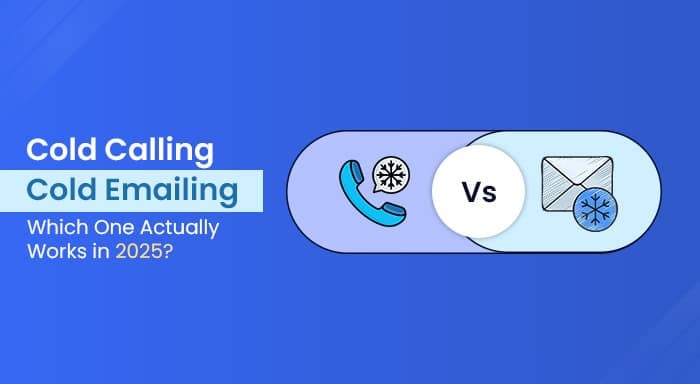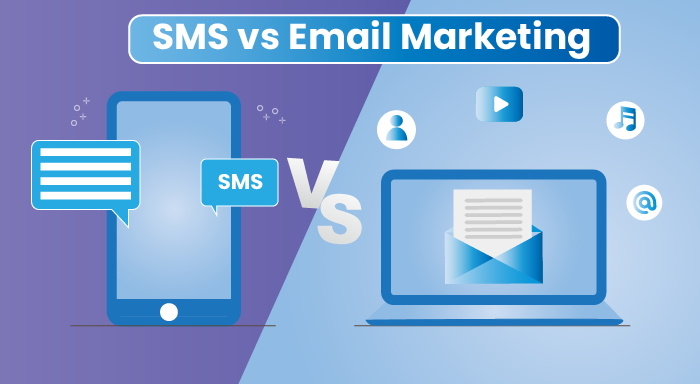One of the most powerful digital marketing tools is email marketing because it gives a business a direct channel to its audience. With the fact that marketing moves towards becoming much more data-driven and customer-centric, automation has truly been the game-changer. The bottom line is that email marketing automation can really streamline communication, improve targeting, and really create a lot of engagement.
In this article, we will enlighten the importance of email marketing automation, its benefits, key features, and the best practices that you can implement into your business and can maximize your growth.
What is Email Marketing Automation?
Email marketing automation basically refers to the use of software to send supremely personalized emails to subscribers based on specific actions or triggers. It basically means email campaigns are automated and thus do not take nearly as much time and work as compared to a manual email campaign, whereas computerized emails are triggered by user behavior or according to pre-defined criteria. That way, the right message can be sent to the right person at the right time-automatically. This is often supported by email campaign management tools that optimize the timing, personalization, and effectiveness of each email.
Why Is Email Marketing Automation So Important?
The modern-day consumer wants personalized relevance delivered immediately. Almost 76 percent of consumers expect that a company should understand their needs and expectations, and 84 percent of marketers have already incorporated marketing automation tools to respond to these demands, according to Salesforce.
Email marketing automation answers several crucial issues that businesses face in today's times as well:
- Personalization: Automation enables businesses to send those mailers according to individual preferences, behavior, and buying patterns in such a way that it can increase open and click-through rates.
- Efficiency: Businesses save time by automating repetitive work like a welcome email, birthday message or, of course, reminders for items left abandoned in the cart.
- Engagement: Mailed autoresponder campaigns will have a high engagement rate compared to a general mail campaign due to their relevance and timeliness. Since the messages are personalized and based on the action performed by the user (such as purchasing or browsing), this appeals more directly to the user's needs and timeliness.
Important Benefits of Email Marketing Automation
1. Enhanced Targeting and Segmentation
Through email marketing automation, lists can be segmented through a wide range of selection criteria, including demographics, user behavioral patterns, purchase history, or even engagement levels. Increased targeting means that messages can reach specific groups where some sense and resonance can be triggered, resulting in higher open and click-through rates and, consequently, conversion rates.
For instance, an e-commerce company dealing with online trading can send completely different e-mails to customers who actually checked out against those who never checked out after adding items to their cart. The more segmented, the greater the chance that the right message will reach the right person, greatly lowering the chances of that e-mail ending up in the spam box.
2. Consistency and Timeliness
Email marketing should be consistent for proper execution. It is, however, a little challenging to send emails on time through manual operations. Automation ensures that messages reach customers on the timeline predefined by the triggers. This is how a perfect welcome series, post-purchase follow-up messages, and feedback request messages can be sent exactly when they are supposed to be sent, keeping the brand top of mind for the customer thereby providing a better customer experience through timely, relevant communication.
3. Customer Retention
With the help of email marketing automation, it is possible to retain existing customers. Let's consider value-driven content for the email, like special offers for loyal customers or personalized product recommendations to the customer. Businesses can strengthen their relationships with current clients and raise customer lifetime value by using such email campaigns. With the automated customer retention strategy, such as reactivation campaigns for those who haven't bought anything in a long time or rewards for frequent buyers, no customer falls through the cracks.
4. Higher ROI and Cost Optimization
Automation reduces the interference of humans. This implies marketers free up their thinking time for more strategy and creativity rather than execution. This leads to a better utilization of resources, with lower costs of operations as well as the overall ROI. According to the report of Litmus, for every dollar used in the mail marketing campaign, it gets a substantial average return: $36. Automatic campaigns seem to have better favourable conversion ratios, thus enhancing the overall ROI.
5. Scalability
As the business grows, email communication managed manually can be humongous. Automation of one's business can bring in scalability without raising the workload, and whether one is using a list of 1,000 or 100,000 subscribers, automation ensures that each subscriber receives his or her personal content without extra effort.
Best Practices of Email Marketing Automation
As you proceed to fully realize the benefits of email marketing automation, best practices become imperative in that you need to ensure effectiveness and customer-centeredness in the campaign.
1. Start with a Clear Strategy
Before you throw yourself into automation, you need to have a clear strategy in motion. You want to see what your overall goals are going to be, whether it is improving conversions, lead nurturing or enhancing retention for the customer. We will map out the customer journey, and we will find out where the touchpoints are that the automated emails are going to resonate most.
2. Data-based segmentation
The most successful attempts at email automation focus on data. Leverage your CRM or email marketing platform to gather insights into the behavior and preferences of your customers. This can then drive additional targeted messages using, for example, a purchase history, engagement level, or location in order to segment email lists.
3. Behavioral Triggers
Well, behavioural triggers hold one of the top positions when describing email automation lists. This kind of arrangement of triggers related to actions a user performs by visiting a website, history cart abandonment, or purchase will allow sending targeted emails, particularly discussing what that recipient is currently interested in or, at least, needs. For example, an abandoned cart email with a discount offer will make customers hit the back button and then come back to checkout.
4. Engaging Content
However, a pretty good automation in the backend doesn't look so great if there is no heart and no soul in the content. Ensure those automated emails are indeed well-crafted, engaging, and represent your brand voice. Compelling subject lines, clear calls to action, and the right visuals—perhaps even a stunning shot by event photographers— help to ensure a reader doesn't lose interest in the message. Remember that the bottom line of personalized content is that it always beats standard versions, and you shouldn't be afraid to use the dynamic fields with possibly a recipient's name, a record of purchases, or more.
5. A/B Test and Optimize
While you automate, do not forget that optimization is a continuous process. Test the different aspects of your email campaigns on A/B, whether it is the subject line, CTA, or visual, to see what clicks best with your audience. To make sure your automated emails produce the desired outcomes, adjust your approach based on the information acquired.
6. Track and Analyze the Performance
Most email marketing tools come with solid analytics in a packaged form that will help you monitor how well your automated campaigns are doing. Keep track of the open rate, click-through rate, conversion rate, as well as unsubscribe rate. Analyze these findings to continually tweak your automation for maximum performance-efficacy alignment with changing needs and for improvements over time.
Email Marketing Automation Tools
Here are several tools that enable business people to automate their emails with a relatively low price and are easy enough to use by every business. The most popular tools are:
- Mailchimp: All-in-one platform that allows you to create targeted campaigns, audience segmentation, and workflow automation.
- HubSpot: Based on robust email automation, the hubspot marketing automation offers a rich set-up for behavior-based triggers and CRM integration for personalized communication.
- ActiveCampaign: Rich segregation and auto-capabilities; help businesses seize the opportunity of building highly targeted sequences of emails.
- Klaviyo: E-commerce platform with automation machinery for sales and customer engagement through tailored email flows.
- Constant Contact: Ideal for small businesses, Constant Contact has a user-friendly interface with abundant options for automation, including welcome emails and anniversary reminders.
Conclusion
Email marketing automation serves potent tactic for changing how companies communicate with their target audience, instead of being a tool only. Along with other advantages like increased engagement and improved customization, automation streamlines communication and enables businesses to more effectively meet their marketing objectives. As technology evolves, the more consistent will be the grounds for email marketing automation, and so will its results.
Businesses that want to succeed must implement data-driven strategies, personalization, and ongoing optimization. This way, through automation, companies can build more relational power, generate more conversions, and eventually sustain growth.



